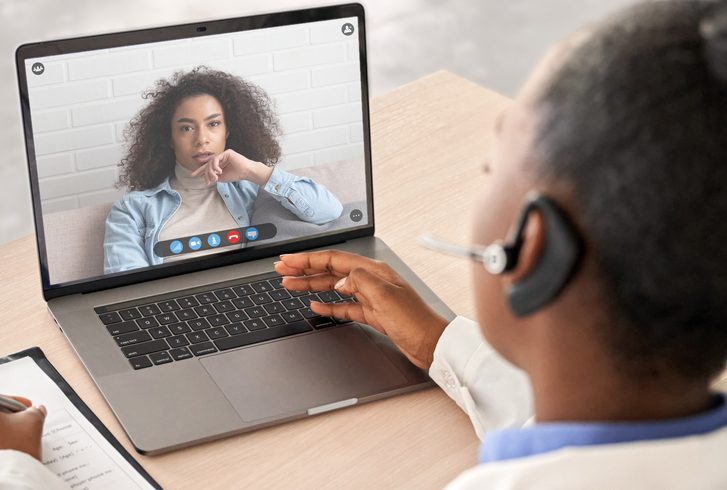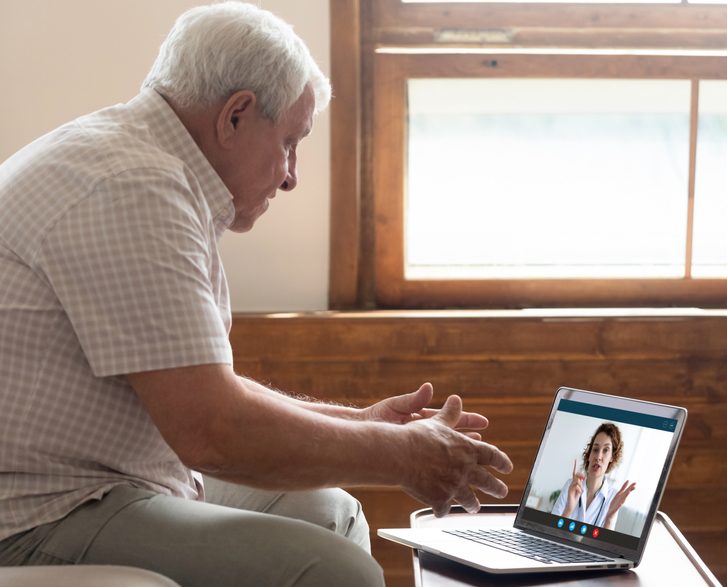
Virtual Therapy is Becoming the New Norm for Counseling—Here’s How You Can Get the Most Out of It

As the coronavirus pandemic continues to affect public health and economies globally, rising amounts of anxiety and distress have taken a toll on a lot of people’s mental health. The need for counseling and therapy sessions are more intense than ever as people get stuck in isolation.
Since the coronavirus-related shutdowns started in mid-March, a lot of therapists and patients have now turned to remote therapy via phones or webcams. What began as a temporary virtual set-up has become a long-term solution.
Although virtual therapy is not the same as the experience of being inside the therapist’s office, the regular remote check-ins are pretty helpful as people try to cope with stress, loneliness, anxiety, and depression due to losing their job, not being able to leave the house, or homeschooling children.
Tribeca Therapy founder Matt Lundquist reveals that he felt surprised yet pleased that almost all of his patients wanted to continue with their virtual therapy throughout the pandemic. He said that body-language gestures, patience, and being able to express your needs could help you get the most out of your virtual therapy session. Aside from that, here are other tips that could get you through virtual counseling.

fizkes/Shutterstock
Therapists are now checking in on their patients remotely and are turning to virtual therapy.
Don’t Be Shy About Speaking Up
Since the therapist and the patient can’t see body language cues of each other through a webcam, it can be a challenge to read each other since body language is used to identify the right time to speak or respond.
To work their way around that, Lundquist and his patients have agreed to use more on-screen hand gestures. The mute and unmute feature in video calls are also helpful, especially for couples and family therapy. Effective results can come out of being patient and giving time for everyone to adjust.
Find a Safe Space
If you have housemates or roommates, you may want to find a quiet space where you can have alone time. Having a safe space is conducive for a productive virtual therapy, according to therapist Linda Snell of New Method Wellness.
Make sure that you can be free with your emotions and feelings in the place that you chose. Snell suggests using your walk-in closet, bedroom, backyard, or balcony. If the privacy is still not enough, sit inside your car or go for a walk alone.

insta_photos/Shutterstock
Do your virtual therapy session in a private space where you feel most comfortable.
Keep it Under the Radar by Saying That You Have a Weekly Meeting
If you don’t want other people you’re isolating with to know that you have therapy sessions, tell them that you will be in a weekly meeting in a set schedule and that some alone time and privacy would be very much appreciated.
Get them into the habit of you having a meeting so they won’t notice if you’re in a virtual therapy session. You can also play white noise or music as your background. For more privacy, hang a “Do Not Disturb” sign on your door.
Discuss What You Feel is Most Important
In the early weeks of stay-at-home orders and when layoffs began, most people wanted to talk about how they can cope with the uncertainty of the situation.
Now that we’re used to the feeling, some people want to go back to the issues that they were tackling before the pandemic. Meanwhile, others still want to discuss pandemic-related concerns. Either way, Lundquist thinks it’s okay. What’s important is that you can communicate your needs to your therapist. You can even switch your topics.

fizkes/Shutterstock
It’s up to you if you want to discuss about your feelings due to the pandemic or you want to touch other topics.
Bring Up Your Concerns to Your Therapist
A considerable number of therapists and patients have moved to the virtual landscape for therapy sessions. However, the less tech-savvy ones may want to rely more on phone calls rather than video calls.
If you find yourself getting troubled over a particular concern during the session, Lundquist says that you shouldn’t be afraid to bring it up to your therapist. After all, it’s your therapy. After you inform them of the problem, try to suggest a possible way to address it that would make things easier and more comfortable for you.
More in Mind & Mental
-
`
Here’s Everything You Need to Know About Open Relationships
An open relationship is a consensual arrangement where partners agree to engage in romantic or sexual relationships with other people. Unlike...
June 6, 2024 -
`
Explore the Multifaceted Goals of Meditation
What is the goal of meditation? If you have ever found yourself asking this question, you are not alone. Meditation has...
May 31, 2024 -
`
When is National I Love You Day Celebrated? Mark Your Calendar
Life can get hectic, and sometimes amidst the daily grind, we forget to express our love and appreciation for the phenomenal...
May 23, 2024 -
`
When’s the Best Time of Day to Fish?
For any angler, a successful fishing trip hinges on several factors. But one of the most crucial elements is timing. Knowing...
May 14, 2024 -
`
What Mental Illness Does Britney Spears Have? Discovering the Answer
Britney Spears, a name that resonates with millions around the globe, goes far beyond the glitz and glamour of her stardom....
May 7, 2024 -
`
Here Are Some Easy Ways To Say No To Unrealistic Expectations In Your Relationship
If you are in a relationship, you should constantly work on improving it. Some early lovebirds fall in love too quickly...
May 3, 2024 -
`
Therapy? Medication? What Are the Treatments for PTSD
Post-Traumatic Stress Disorder (PTSD) is a common after-effect of traumatic events. It can be a debilitating condition, but the good news...
April 25, 2024 -
`
Courting vs Dating – Which Relationship Path is Right for You?
In today’s fast-paced world, the terms ‘courting’ and ‘dating’ often swirl around in conversations about relationships. While some people may use...
April 23, 2024 -
`
Essential Mexico Travel Tips for a Seamless Adventure
Mexico, a land of vibrant culture, breathtaking landscapes, and mouthwatering cuisine, beckons travelers from across the globe. But before you embark...
April 16, 2024















You must be logged in to post a comment Login